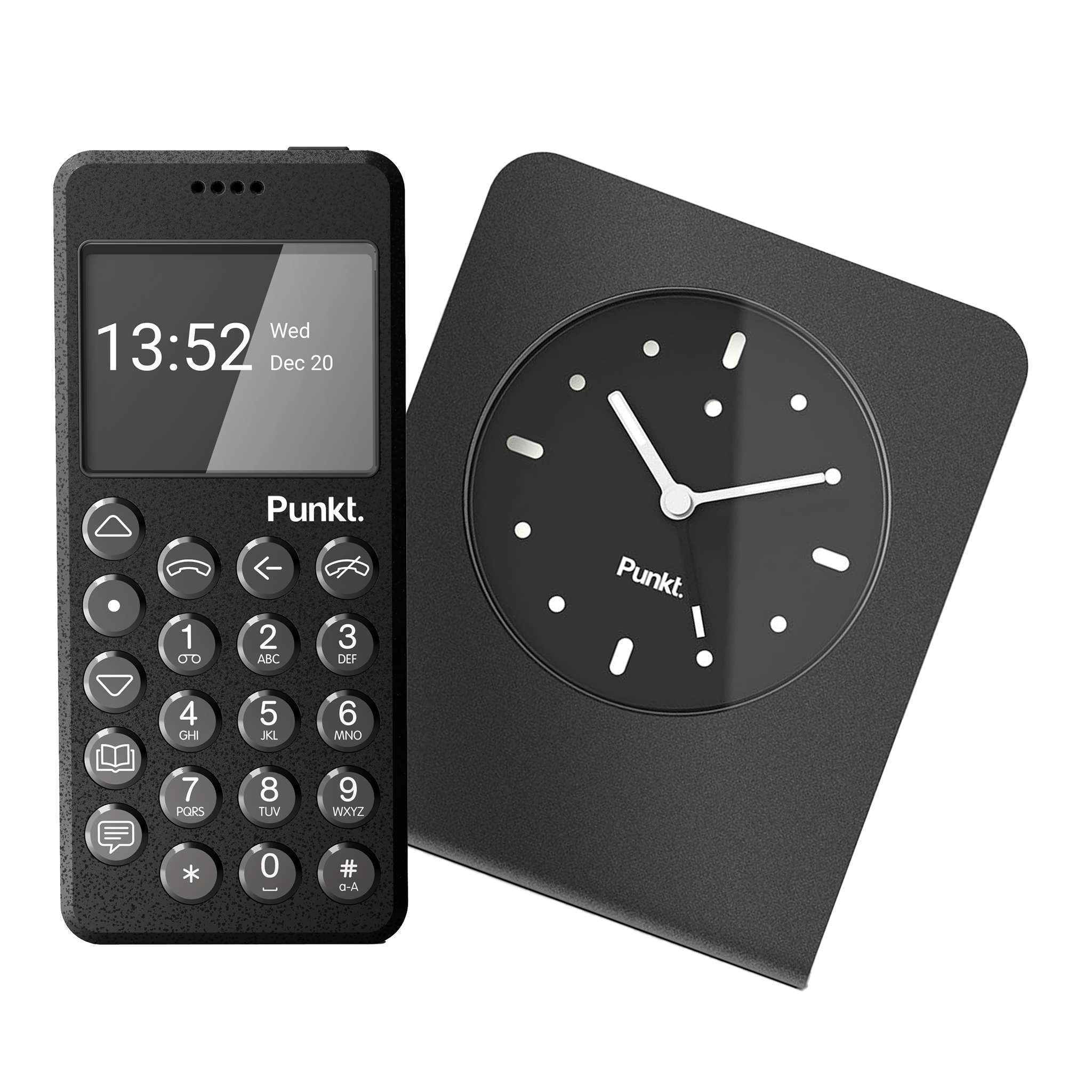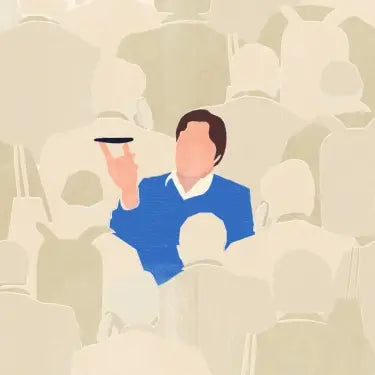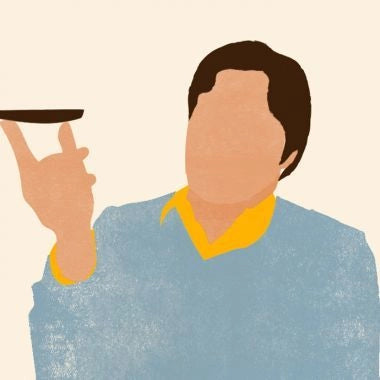Un ritiro parziale: fare qualche passo indietro per noi stessi
Ritorno a Tokyo
Sono tornato a Tokyo all'inizio di luglio. Si è rivelata essere l'estate più calda di sempre.
La maggior parte dei giorni ha superato i 34ºC con un’umidità implacabile. Anche i temporali estivi, più frequenti e intensi del solito, non hanno portato il consueto sollievo dopo la pioggia, aggiungendo solo altra umidità all’aria già densa che avvolgeva la città.
Essendo un freelance, ho passato la maggior parte delle mie giornate chiuso nel mio appartamento con aria condizionata davanti a uno schermo (digitale) pieno di finestre del (browser) aperte. Durante il giorno passo dal laptop allo smartphone per lavoro, concedendomi fin troppe pause sui social media.
Il peso della connettività
Non mi sto lamentando. Siamo fortunati ad avere questi lussi tecnologici moderni. Soprattutto in un’epoca in cui le nostre “case” e i nostri “uffici” spesso coincidono e siamo meno vincolati da paese, distanza, fuso orario. Questa connettività ci offre libertà geografica, piacevoli interazioni istantanee con amici e familiari in tutto il mondo, sollievo comico da meme sciocchi, e la possibilità di restare aggiornati sugli eventi.
Nonostante i benefici, sotto tutta questa stimolazione e informazione, ultimamente sento una negatività sottile e crescente — come un prurito o un'irritazione — che persiste in sottofondo.
Penso che una delle principali cause sia che abbiamo sempre meno controllo su ciò che vediamo online.
Più usiamo i social media, più siamo soggetti a contenuti che avremmo preferito non vedere: pubblicità appariscenti di prodotti irrilevanti, immagini generate dall’IA sempre più inquietanti, audio indesiderati che si sovrappongono alla mia colonna sonora personale, e — il peggiore di tutti — scene orribili di violenza e guerra, immagini di sofferenza umana mescolate tra selfie, pubblicità e tramonti: una vera giustapposizione distopica.
Anche se ignoriamo (o diventiamo insensibili) al peggio, qualcosa ci penetra comunque nella mente.
Deve essere così.
Per me, questo bombardamento di immagini non richieste ha cominciato a influenzare il mio umore di base — è diventato uno stress latente e una distrazione dal lavoro. Ho provato a curare il mio feed. Trascorrendo il mio prezioso tempo ad addestrare gli algoritmi delle big tech (gratis!) per cercare di ottenere l’esperienza utente che desideravo.
Nonostante i numerosi controlli che ci vengono dati, non possiamo mai prevedere cosa potremmo vedere quando apriamo un'app e iniziamo a scorrere. E penso che tutti abbiamo vissuto quel momento scomodo in cui decidiamo se nascondere o smettere di seguire amici, familiari o colleghi che postano contenuti che preferiremmo non vedere.
Per chi lavora nei media o ha un lavoro che richiede interazioni online, disconnettersi del tutto sarebbe una decisione economicamente costosa. In effetti, la maggior parte di noi non può abbandonare Internet, ma possiamo ritirarci un po’.
Ed è quello che ho deciso di fare.
La decisione di ritirarsi
A fine agosto, con il caldo che non dava segni di tregua, avevo raggiunto il mio limite di tempo trascorso chiuso in casa e bombardato di contenuti. Ho deciso di uscire dalla città verso un luogo più tranquillo, fresco e panoramico. Ho preso uno Shinkansen per Kagawa, la prefettura più piccola del Giappone, parte dell’isola di Shikoku e affacciata sul mare interno di Setouchi.

Perché Kagawa?
Kagawa è famosa per il suo ottimo clima, simile al Mediterraneo. È un luogo noto per gli udon, un pellegrinaggio buddista di 88 templi, la pesca, gli agrumi e persino le olive. Il posto perfetto per tentare seriamente il Digital Detox di Punkt. Poiché avevo il MP02, è bastato un rapido cambio di SIM per non dovermi preoccupare di perdere chiamate urgenti da parte di persone care o del lavoro.
La prima volta che ho visitato Kagawa è stato nel 2016 per un progetto di promozione della cultura gastronomica locale all’estero. Le persone del posto che ho incontrato erano gentili, rilassate e accoglienti in un modo diverso rispetto alle aree urbane del Giappone. La bellezza del paesaggio e il ritmo del mare interno offrivano un metronomo rilassante per segnare il tempo con la brezza fresca. Continuo a tornarci. Usandolo come una sorta di fortezza della solitudine quando Tokyo inizia a sopraffare — o surriscaldare.
Abbracciare il Digital Detox
Durante questo viaggio, ho deciso di lasciare lo smartphone in stanza ogni volta che uscivo e usare il portatile solo per eventuali imprevisti di lavoro. Trascorrevo le giornate camminando lungo la spiaggia di Chichibugahama. Facevo foto intenzionali con la mia fotocamera, invece di scatti rapidi o video verticali con lo smartphone. Non avrei pensato al caos algoritmico di internet non appena mettevo piede fuori dalla porta ogni giorno.
Ritrovare la concentrazione
Le dimensioni discrete del MP02 facevano sì che quasi non lo sentissi in tasca. Zero tentazioni. Nessun promemoria tattile della presenza di Internet là fuori nell’etere.
Ho rapidamente ricordato la mia capacità di concentrarmi sui cinque sensi e sul ritmo dei miei passi lungo il mare. Aspettavo che le foto si rivelassero mentre camminavo. Mi sono reso conto di quanto lo smartphone e il passaggio ai video su TikTok e Instagram abbiano indotto una sorta di “concentrazione divisa” in me. Invece di riconoscere una scena e scattare una foto, ora mi chiedo se non sarebbe meglio farne un video per le storie o futuri incarichi.
Quella esitazione è l’opposto di ciò che un fotografo desidera mentre vive un “momento decisivo”, se un concetto del genere esiste ancora. Non avere queste nuove opzioni era, in effetti, un sollievo. Camminavo e scattavo foto, semplicemente. Come facevo prima che lo smartphone e i social media confondessero le cose e incentivassero i video.
La gioia dell’immersione
Quando tornavo in appartamento dopo queste passeggiate quotidiane, ero più interessato a rivedere le poche immagini che avevo scattato per mio piacere. Non avevo fretta di condividere un clip da 15 secondi con amici e familiari che non possono viaggiare, o peggio, per editori che potrebbero vedermi e contattarmi per un incarico. Condividevo molto meno. Era un ritorno a un approccio più interiorizzato alla fotografia e alla gioia del camminare.
E poiché ero comunque reperibile grazie al MP02, non avevo quell’ansia che spesso accompagna una disconnessione totale. Nessuna corsa immediata a controllare lo smartphone. “Sanno come trovarmi”, pensavo tra me e me.
Assaporare il momento
Mentre modificavo le foto scattate, anche l’esperienza sensoriale che le accompagnava era più chiara. Ricordavo in modo più dettagliato e vivido i momenti in cui avevo premuto il pulsante:
Due corvi che volano sopra di me inseguendo un Nibbio nero lontano dal loro nido. Voci lontane di famiglie che giocano nelle pozze di marea. Aironi bianchi fermi come sentinelle spettrali mentre cacciano. Schiuma e riflessi che accecano la vista sulla superficie ondulata del mare interno. Toni viola e arancioni che saturano il cielo al tramonto.
Non ho fotografato queste descrizioni né le ho registrate in clip per il mio profilo Instagram. Le ho semplicemente vissute. Forse è per questo che ora riesco a scriverne con più vivacità rispetto a se avessi controllato lo smartphone subito dopo.
Osservare, non sempre partecipare
Siamo davvero fortunati a vivere in un’epoca di meraviglie tecnologiche e connessione costante. Ma proprio per questo è più importante che mai prendere il controllo e riservare del tempo per noi stessi nella vita reale.
Scegliere di immergerci nella ricchezza della nostra esperienza sensoriale, invece di scansionarla costantemente per contenuti da condividere. Il desiderio di condividere e socializzare è innato in noi esseri umani. Internet lo rende più facile che mai. Ma non dobbiamo regalare il nostro tempo libero in tempo reale per essere consumati e monetizzati.
Dovremmo impegnarci a ritirarci fisicamente, così come da quella sensazione di stimolazione e interazione obbligata e quasi continua.
A volte, è meglio osservare che partecipare.
Lance H.











